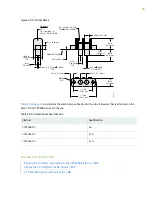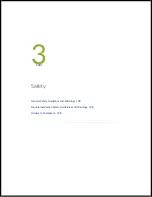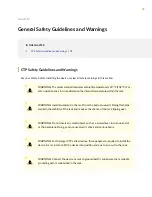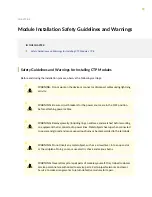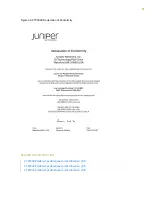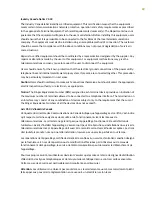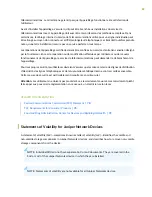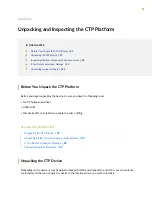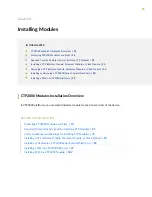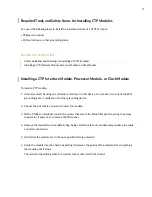
Industry Canada Notice CS-03
The Industry Canada label identifies certified equipment. This certification means that the equipment
meets certain telecommunications network protective, operation and safety requirements as prescribed
in the appropriate Terminal Equipment Technical Requirements document(s). The Department does not
guarantee that the equipment will operate to the user's satisfaction. Before installing this equipment, users
should ensure that it is permissible to be connected to the facilities of the local telecommunications
company. The equipment must also be installed using an acceptable method of connection. The customer
should be aware that compliance with the above conditions may not prevent degradation of service in
some situations.
Repairs to certified equipment should be coordinated by a representative designated by the supplier. Any
repairs or alterations made by the user to this equipment, or equipment malfunctions, may give the
telecommunications company cause to request the user to disconnect the equipment.
Users should ensure for their own protection that the electrical ground connections of the power utility,
telephone lines and internal metallic water pipe system, if present, are connected together. This precaution
may be particularly important in rural areas.
Caution: Users should not attempt to make such connections themselves, but should contact the appropriate
electric inspection authority, or electrician, as appropriate.
Notice: The Ringer Equivalence Number (REN) assigned to each terminal device provides an indication of
the maximum number of terminals allowed to be connected to a telephone interface. The termination on
an interface may consist of any combination of devices subject only to the requirement that the sum of
the Ringer Equivalence Numbers of all the devices does not exceed 5.
Avis CS-03 d'Industrie Canada
L'étiquette du ministère des Communications du Canada indique que l'appareillage est certifié, c'est-à-dire
qu'il respecte certaines exigences de sécurité et de fonctionnement visant les réseaux de
télécommunications. Le ministère ne garantit pas que l'appareillage fonctionnera à la satisfaction de
l'utilisateur. Avant d'installer l'appareillage, s'assurer qu'il peut être branché aux installations du service de
télécommunications local. L'appareillage doit aussi être raccordé selon des méthodes acceptées. Le client
doit toutefois prendre note qu'une telle installation n'assure pas un service parfait en tout temps.
Les réparations de l'appareillage certifié devraient être confiées à un service d'entretien canadien désigné
par lefournisseur. En cas de réparation ou de modification effectuées par l'utilisateur ou de mauvais
fonctionnement del'appareillage, le service de télécommunications peut demander le débranchment de
l'appareillage.
Pour leur propre sécurité, les utilisateurs devraient s'assurer que les mises à la terre des lignes de distribution
d'électricité, des lignes téléphoniques et de la tuyauterie métallique interne sont raccordées ensemble.
Cette mesure de sécurité est particulièrement importante en milieu rural.
Attention: Les utilisateurs ne doivent pas procéder à ces raccordements eux-mêmes mais doivent plutôt
faire appel aux pouvoirs de réglementation en cause ou à un électricien, selon le cas.
80
Summary of Contents for CTP2000 Series
Page 1: ...CTP2000 Series Circuit to Packet Platforms Hardware Guide Published 2020 08 31 ...
Page 8: ...1 PART Overview CTP2000 Series Platform Overview 2 CTP2000 Series Interface Modules 11 ...
Page 112: ...Installing SFPs in a CTP2000 Module 102 105 ...
Page 127: ...5 PART Configuration Accessing the CTP2000 Platform 121 ...
Page 144: ...7 PART Troubleshooting Troubleshooting Power Failures 138 Contacting Customer Support 140 ...





